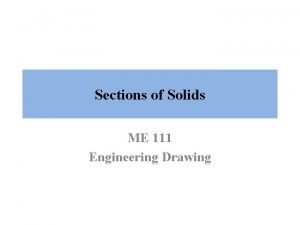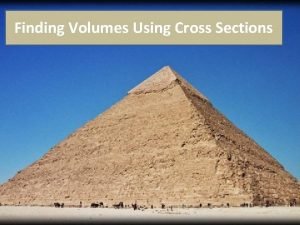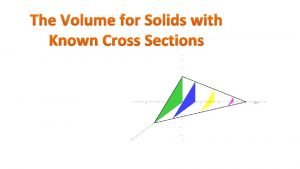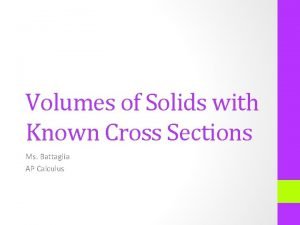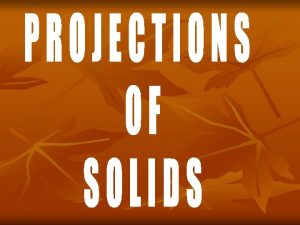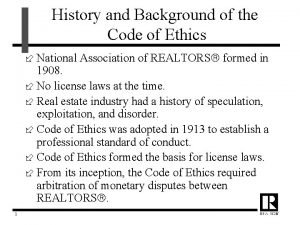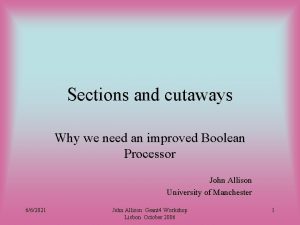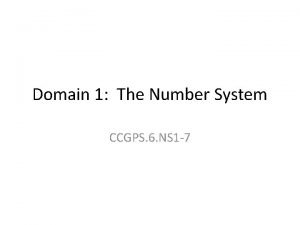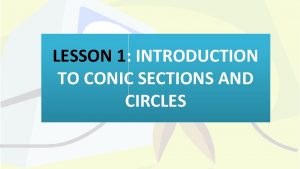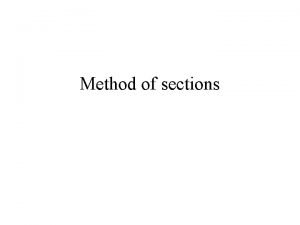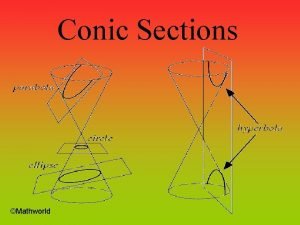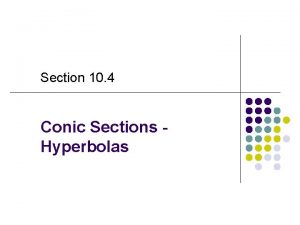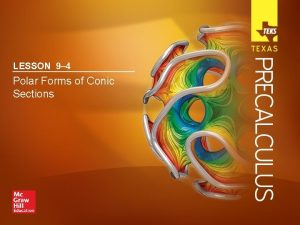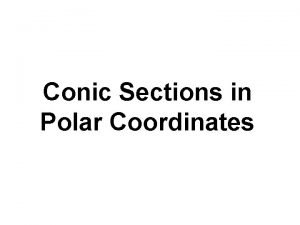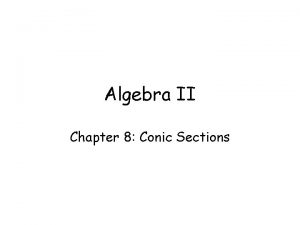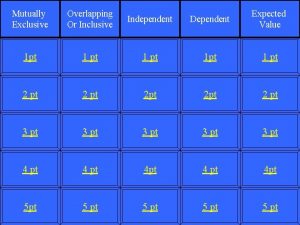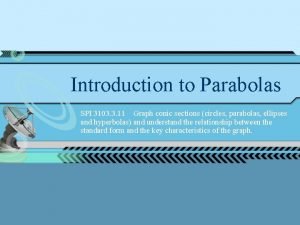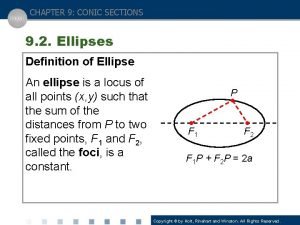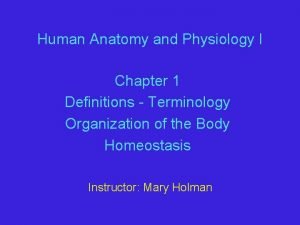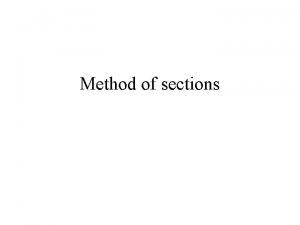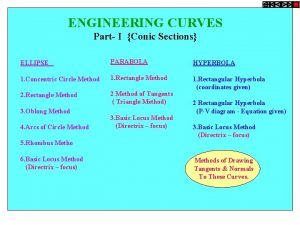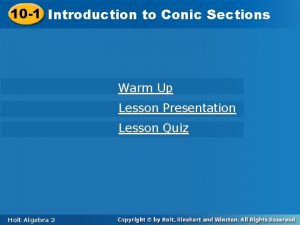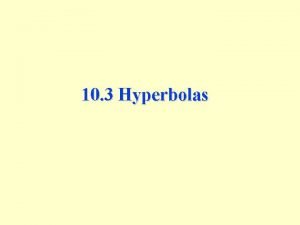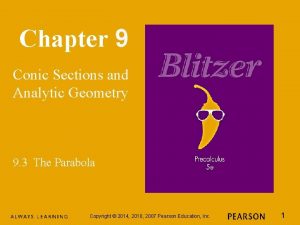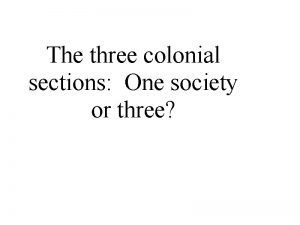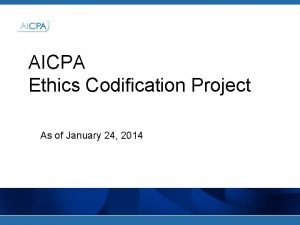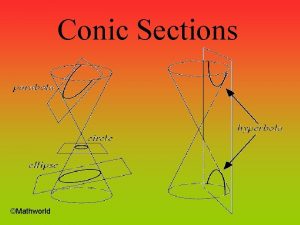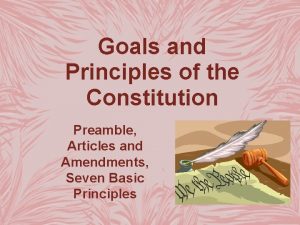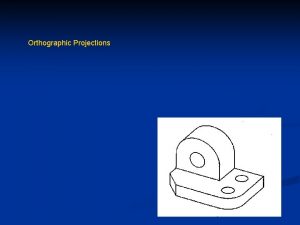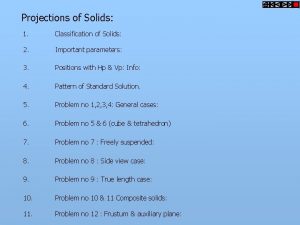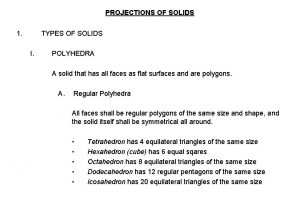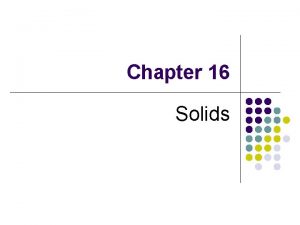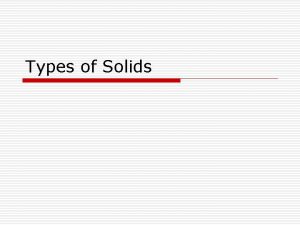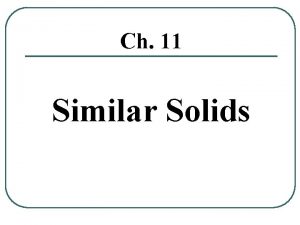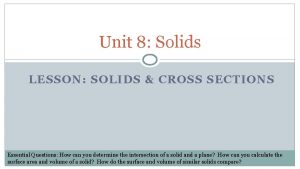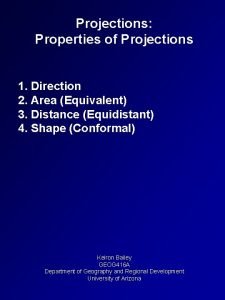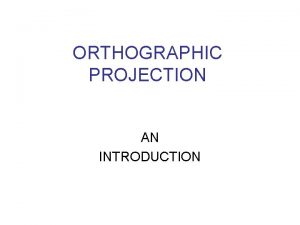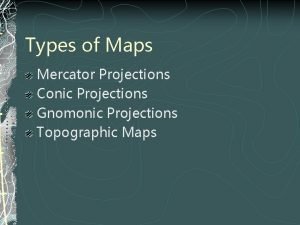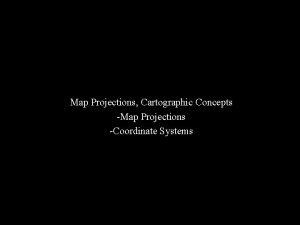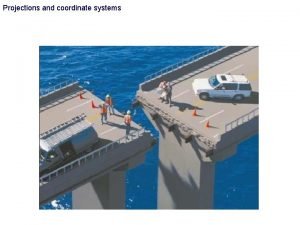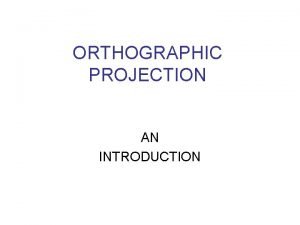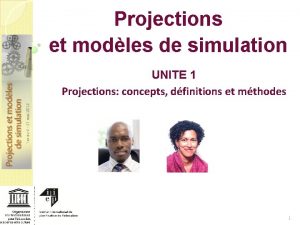PROJECTIONS OF SOLIDS SECTIONS OF SOLIDS PROJECTIONS OF


































- Slides: 34

PROJECTIONS OF SOLIDS & SECTIONS OF SOLIDS

PROJECTIONS OF SOLIDS

• a solid is a three dimensional object having length, breadth and thickness. In engineering practice, one often come across solids bounded by simple or complex geometric surfaces. To present a solid in orthographic projections, the number and types of views necessary will depend upon the type of solid and its orientation with respect to the principal planes of projection.

• Polyhedra: A Polyhedron is defined as a solid bounded by plane surfaces called faces. • Regular polyhedra: A Regular polyhedron is a solid bounded by plane surfaces, which are equal and regular. there are two more categories of polyhedra, namely (i) prisms and (ii) Pyramids (i) prism: A prism is a polyhedron having two equal ends or bases, parallel to each other. The two bases are joined by faces, which are rectangles. The imaginary line joining the centres of the bases is called the axis of the solid. (ii) Pyramid: A pyramid is a polyhedron having one base and a number of isosceles triangular faces , meeting at a point called the vertex or apex. The imaginary line joining the centre of the base and apex is called the axis of the solid. A pyramid or prism is said to be regular when axis is perpendicular to the base, both pyramids and prisms are named according to the shape of the base, viz. , triangular pyramid/ prism, pentagonal pyramid/ prism and so on.

PRISMS PYRAMIDS

Cylinder cone sphere

• Solids of revolution: solids of revolutions are obtained or generated by rotating a plane figure about one of its edges. Ex: cylinder, cone and sphere. • Cylinder: A cylinder is generated by rotating a rectangle about one of its edges. The lateral surface is connected at its either end by two circular bases. • Cone: A cone is generated by rotating a right angled triangle about one of its perpendicular sides. The lateral surface of the cone is connected by a circular base. a cylinder or a cone is said to be regular when the axis is perpendicular to the base. The lines drawn on the surface of a cylinder and parallel to the axis, are known as generators. The length of a generator is equal to the height of the cylinder. A line drawn from the vertex to any point on the base of a cone is also known as generator, whose length is equal to the slant height of the cone. • Sphere: a sphere is also a solid of revolution generated by rotating a semi-circle about its diameter. The mid point of the diameter is the centre of the sphere. All points on the surface of a sphere are equidistant from the centre.

POSITIONS OF SOLIDS 1. Axis perpendicular to one of the principal planes and parallel to the other. 2. Axis inclined to one of the principal planes and parallel to the other. 3. Axis inclined to both the principal planes.

Axis perpendicular to H. P and parallel to V. P. Problem: A cube of 40 side, is resting with a face on H. P such that, the vertical faces are equally inclined to V. P. Draw its projections.

Axis perpendicular to V. P and parallel to H. P. Problem: A pentagonal pyramid of base 25 side and axis 60 long, is resting on an edge of the base. Draw the projections of the pyramid, when its axis is perpendicular to V. P and the base is at 15 from V. P.

Axis inclined to one of the principal plane and parallel to the other.

Conditions to be Observed • If a solid has an edge of its base parallel to H. P or on H. P, that edge should be kept perpendicular to V. P. If the edge of a plane is parallel to V. P or on V. P, that edge should be kept perpendicular to H. P. • If a solid has a corner of its base on H. P, the sides of the base containing that corner should be kept equally inclined to V. P, if the corner of the base is on V. P, the sides of the base containing the corner should be kept equally inclined to H. P.

VISIBILITY RULES • It must be kept in mind that the lines corresponding to the boundary of the view must be visible and hence must be represented by thick lines. • When two lines representing the edges cross each other; one of them must be invisible and therefore, must be represented by dotted lines. • Lines passing through visible base are invisible.

Problem: Draw the projections of a hexagonal prism of base 25 side and axis 60 long, when it is resting on one of its corners of the base on H. P. The axis of the solid is inclined at 450 to H. P. Follow the change of position method

Problem: Draw the projections of a pentagonal prism of base 25 side and axis 50 long, when it is resting on one of its rectangular faces on H. P. The axis of the solid is inclined at 450 to V. P. Follow the change of position method.

Problem: Draw the projections of a hexagonal pyramid with side of base 30 and axis 70 long, which is resting with a slant face on H. P such that, the axis is parallel to V. P. Follow the change of position method.

Axis inclined to both the principal planes: Problem: A pentagonal prism of side of base 25 and axis 40 long, is resting on H. P on a corner of its base. Draw the projections of the prism, when the base is inclined at 60 0 to H. P and the axis appears to be inclined at 300 to V. P. Follow the change of position method.

Problem: A hexagonal prism of base 25 side and axis 45 long, is positioned with one of its base edges on H. P such that, the axis is inclined at 300 to H. P and 450 to V. P. Draw its projections. Follow the change of position method.

Applications of auxiliary plane method: Problem: Draw the projections of a cone of diameter of base 40 and axis 60 long, when it is lying on a point of the base on H. P, with its axis inclined at 45 0 to H. P and parallel to V. P. Follow the auxiliary plane method.

Problem: A cylindrical block of diameter 75 and 25 thick, has a hexagonal hole of 25 side, cut centrally through its flat faces. Draw the projections of the block, when its flat faces are vertical and inclined at 300 to V. P and a face of the hexagonal hole is parallel to H. P. Follow the auxiliary plane method.

Problem: A pentagonal pyramid, with side of base 25 and axis 75 long, rests on an edge of the base on H. P such that, the edge is parallel to V. P. The base is tilted such that, the topmost slant edge is parallel to H. P and perpendicular to V. P. Draw the projections of the solid.

Problem: draw the projections of a cube of side 25, resting on H. P on one of its corners, with a solid diagonal perpendicular to V. P. follow the change of position method.

SECTIONS OF SOLIDS

• The conventional orthographic views, if selected and drawn properly, may reveal sufficient information about the shape and size of object. However, the conventional views may consist of too many hidden lines for complicated objects, which makes the interpretation difficult. To overcome this, it is customary to imagine the object, cut by a section plane. The portion of the object between the observer and the section plane is assumed to be remove. The projection of the remaining solid is known as a sectional view. The actual sectioned portion of the view is shown by cross-hatched lines.

POSITIONS OF SECTION PLANES 1. Section plane parallel to H. P 2. Section plane parallel to V. P 3. Section plane inclined to H. P and perpendicular to V. P 4. Section plane inclined to V. P and perpendicular to H. P 5. Section plane perpendicular to both H. P and V. P 6. Section plane inclined to both H. P and V. P

Section plane parallel to H. P: Problem: A cube of 40 edge, is resting on H. P on one of its edges, with a face parallel to V. P. One of the faces containing the resting edge is inclined at 30 0 to H. P. The solid is cut by a section plane, parallel to H. P and 10 above the axis. Draw the projections of the remaining solid.

Section plane parallel to V. P: Problem: A pentagonal pyramid of side of base 35 and axis 50 long, stands with its base on H. P such that, one of the base edges is perpendicular to V. P. A section plane parallel to V. P cuts the solid at a distance of 15 from the corner of the base which is nearer to the observer. Draw the top and sectional front views of the cut solid. NOTE: True shape of a section: the projection of the section on a plane parallel to the section plane, will appear in its true shape of the section. Thus, when the section plane is parallel to H. P, the true shape of the section will be seen in the sectional top view. When it is parallel to V. P, the true shape of the section will appear in the sectional front view.

Section plane inclined to H. P and perpendicular to V. P Problem: A cylinder of 45 diameter and 70 long, is resting on one of its bases on H. P. It is cut by a section plane, inclined at 600 with H. P and passing through a point on the axis at 15 from one end. Draw the three views of the solid and also obtain the true shape of the section. Note: true shape of a section: when the section plane is inclined, the section has to be projected on an auxiliary plane, parallel to the cutting plane, to obtain its true shape.

Section plane inclined to V. P and perpendicular to H. P: Problem: A pentagonal pyramid with edge of base 25 and axis 65 long, is resting on H. P on its base with an edge nearer to the observer, parallel to V. P. It is cut by a section plane, inclined at 600 to V. P and at a distance of 6 from the axis. Draw the projections and obtain the true shape of the section.

Problem: A hexagonal prism of side base 30 and length of axis 75, is resting on a corner of its base on H. P, with the longer edge containing that corner, inclined to H. P at 300. It is cut by a section plane parallel to H. P and passing through the mid -point of the axis. Draw the front and sectional top views of the solid.

Problem: A cylinder of 50 diameter and axis 70 long, lies on H. P on one of its generators such that, the axis is inclined at 450 to V. P. A section plane parallel to V. P, passes through the farthest point of the visible base from the observer. Draw the projections of the cut solid.

Problem: A cylinder of 50 diameter and 70 long, is resting on H. P, with its axis inclined at 300 to H. P and parallel to V. P. A section plane inclined at 450 to V. P, passes through the axis at 25 from one end of it. Draw the projections of the cut solid.

Section plane perpendicular to both H. P and V. P: Problem: A tetrahedron of side 60, is resting on H. P on one of its faces, with an edge of it parallel to V. P. It is cut by a section plane, perpendicular to both H. P and V. P and 15 away from the axis of the solid. Draw the sectional side view.

Problem: A square prism of base 50 side and axis 100 long, stands with its base on H. P such that, all the faces are equally inclined to V. P. It is cut by a section plane, perpendicular to V. P such that, the true shape of the section is a rhombus of longer diagonal 90. Find the inclination of the section plane with H. P. Draw the projections of the solid.
 Volumes of solids with known cross sections calculator
Volumes of solids with known cross sections calculator What is meant by true shape of section
What is meant by true shape of section Volume using cross sections
Volume using cross sections Geometric solids with circular cross sections
Geometric solids with circular cross sections Semicircle cross section formula
Semicircle cross section formula Section of solids engineering drawing
Section of solids engineering drawing Right regular solids
Right regular solids Three major sections of code of ethics
Three major sections of code of ethics Cutaways and cross sections definition
Cutaways and cross sections definition Volumes of known cross sections
Volumes of known cross sections Lesson 1 exploring conic sections
Lesson 1 exploring conic sections Method of sections
Method of sections Real life application of conic sections
Real life application of conic sections The code requires that realtors® respect:
The code requires that realtors® respect: Equation of a hyperbola
Equation of a hyperbola Polar form of conic sections
Polar form of conic sections Conic sections in polar coordinates
Conic sections in polar coordinates Algebra 2 cheat sheet
Algebra 2 cheat sheet Trinity has a spinner with 10 equal sections
Trinity has a spinner with 10 equal sections Eiffel tower conic sections
Eiffel tower conic sections Body orientation direction planes and sections
Body orientation direction planes and sections Ellipse terminology
Ellipse terminology Chapter 5 lesson 4 declaring independence
Chapter 5 lesson 4 declaring independence Right hyperchondriac region
Right hyperchondriac region Method of section
Method of section Project charter sections
Project charter sections Is a cycloid a conic section
Is a cycloid a conic section This view represents
This view represents Conic sections quiz
Conic sections quiz Hyperbola
Hyperbola Chapter 9 conic sections and analytic geometry
Chapter 9 conic sections and analytic geometry The three colonial sections-one society or three
The three colonial sections-one society or three The aicpa ethics codification includes which sections
The aicpa ethics codification includes which sections Conic sections definition
Conic sections definition Goals of constitution preamble
Goals of constitution preamble

